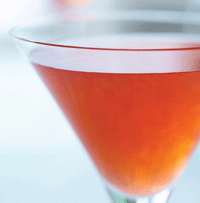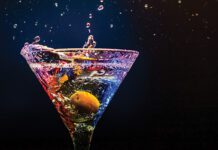Derided by mixology’s elite, Vodka pours on
Vodka is practically a four-letter word among Canada’s top bartenders. Ask many of them across the country, and they’ll tell you it’s a colourless, odourless, flavourless liquid that’s easily masked and doesn’t add anything to a cocktail. And, for the most part, they’re right. But, lean on any given bar on a Saturday night, and ask patrons if they care what elite mixologists think about the vodka sodas in their hand, and you’ll find many don’t.
Despite the preaching from behind the wood, vodka remains immensely popular and is in fact a growing category. Chris Layton, media relations coordinator at Ontario’s liquor control board, says the numbers are unequivocal. “In fiscal 2010 to ’11, April 1 to March 31, sales of vodka at the LCBO increased by 7.3 per cent to $429 million versus the previous year,” he says. Compare that to the sales stats for rum, up 5.6 per cent to $239.8 million and gin, up 4.1 per cent to $56.2 million — vodka is the clear winner in the court of public opinion.
Cameron Bogue, beverage director for the Vancouver-based, Earl’s Restaurants Inc., is a man of two minds when it comes to the clear, clean spirit. “There are two varying opinions when it comes to vodka,” he starts. “One, is the opinion of most bartenders, that it that doesn’t add anything to a cocktail, but those attributes also make it the bestselling spirit in the world.”
It’s the second point that is the most important, despite Bogue’s personal preference for strongly flavoured base spirits such as gin or tequila. “At heart, I’m a cocktail nerd, too, so I understand the chef-coat and curly-q mustache
mixology scene, but I think I’m more of a realist than that; I’ll work with what people want.”
So when it comes to vodka, the sky’s the limit, by virtue of those traits mixologists decry. “With our new menus, it’s all about keeping it simple,” he says. “Vodka is a blank canvas, so you can work to highlight any flavour you want.”
And highlight they do. At Earl’s new cocktail concept, V, with locations in Calgary and Vancouver, the drink list is a testament to vodka’s versatility and popularity. Concoctions such as Pistachio Pear — a unique blend of vodka, pear
juice, pistachios, simple syrup and lime juice — or Lychee Li with vodka, lychee syrup, lemon juice, kaffir lime leaf, mint and soda, blend modern mixology’s key tenets of a fresh artisanal approach, with the mass appeal of vodka as the base spirit.
Whether in a sweet or sour cocktail, vodka’s reign at the top of the spirit podium looks to be unshakable, and that’s a reality Bogue says bartenders looking for broad appeal have to come to understand. However, he’s also quick to note a cocktail program heavy on the vodka, doesn’t have to be — nor should it be — basic, boring and awash with pre-fabricated ingredients. “At Earl’s and V, we’ve removed everything pre-packaged, pre-made and pasteurized from the bar,” he says.
“I probably had 1,000 bartenders cursing my name as they squeezed lemons and limes every morning, but fresh ingredients and fresh cocktails are a trend we’re taking to the mass market.”
Sorry mustachioed mixology mavens, gin is great and whisky is wonderful, but, when it comes to moving the masses towards the new school of handcrafted, classic cocktails, there’s no better sprit for the job than plain old vodka.
VODKA TIPS
With dozens of premium vodkas to choose from, it’s often difficult for bartenders to know which vodka will be best served in a cosmopolitan or dirty martini, and, more importantly, how to keep it tasting great. Frank Heaps, CEO of Newfoundland-made Iceburg vodka, has suggestions.
Ingredients: Purity creates the perfect taste. Artificial flavours reduce the purity of the vodka in the bottle and inevitably affect its taste and smoothness. The cleanest tasting vodkas use the purest and most natural resources.
Storing: Never store vodka in the freezer. Extreme cold can ruin the “nose” and taste. However, it is best served chilled.
Pouring: Serve in a chilled two- to three-ounce clear glass. Sipping vodka that has been slightly chilled brings out the natural flavours and aromas and allows you to savour the taste. Sip slowly and let thevodka rest on your palate to start. Premium vodkas should taste creamy and smooth with very little burn on the palate.




















